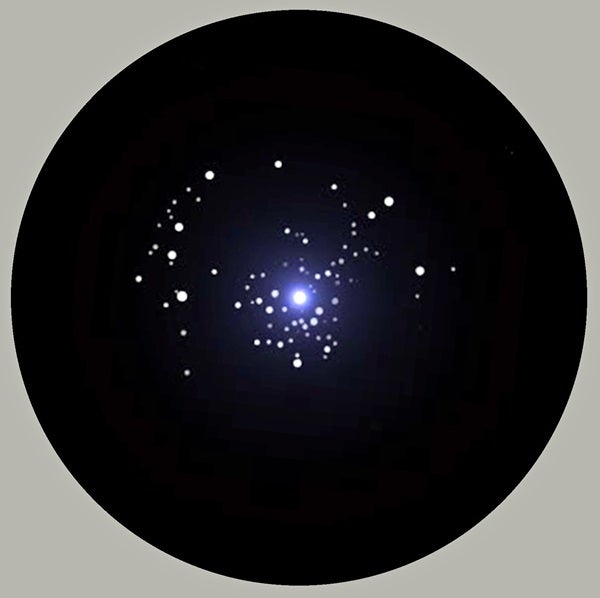The planet Jupiter gained weight in a hurry during its infancy. It had to, because the material from which it formed probably disappeared in just a few million years, according to a new study of planet formation around young stars.
Harvard-Smithsonian Center for Asterophysics (CfA) astronomers examined the 5 million-year-old star cluster NGC 2362 with NASA’s Spitzer Space Telescope, which can detect the signatures of actively forming planets in infrared light. They found that all stars with the mass of the Sun or greater have lost their protoplanetary (planet-forming) disks. Only a few stars less massive than the Sun retain their protoplanetary disks. These disks provide the raw material for forming gas giants like Jupiter. Therefore, gas giants have to form in less than 5 million years or they probably won’t form at all.
“Even though astronomers have detected hundreds of Jupiter-mass planets around other stars, our results suggest that such planets must form extremely fast. Whatever process is responsible for forming Jupiters has to be incredibly efficient,” said CfA lead researcher Thayne Currie.
Even though nearly all gas-giant-forming disks in NGC 2362 have disappeared, several stars in the cluster have “debris disks,” which indicate that smaller rocky or icy bodies such as Earth, Mars, or Pluto may still be forming.
“The Earth got going sooner, but Jupiter finished first, thanks to a big growth spurt,” said co-author Scott Kenyon.
Kenyon added that while Earth took about 20 to 30 million years to reach its final mass, Jupiter was fully grown in only 2 to 3 million years.
Previous studies indicated that protoplanetary disks disappear within 10 million years. The new findings put even tighter constraints on the time available to create gas giant planets around stars of various masses.










